Have you ever wondered what behavioral quirks to expect during a Savannah Cat’s heat cycle? This exotic breed, renowned for its unique traits derived from the African Serval, presents some distinctive challenges when in heat. From attention-seeking behavior to vocalization, understanding the ins and outs of a Savannah Cat in heat is pivotal to ensuring their well-being.
During the Savannah Cat breeding season, their behavioral patterns shift dramatically. Familiarity with these changes can aid you in handling a Savannah Cat in heat and provide better care. Recognizing the signs and knowing what to expect can make this period smoother for both you and your feline friend.
Key Takeaways
- Savannah Cats exhibit unique behaviors during their heat cycle.
- The Savannah Cat heat cycle is vital for understanding their breeding season.
- Proper handling and care are essential during a Savannah Cat’s heat.
- Recognizing the signs of a Savannah Cat in heat helps manage their needs.
- Anticipating behavioral changes can lead to better overall care during this phase.
Introduction to Savannah Cats
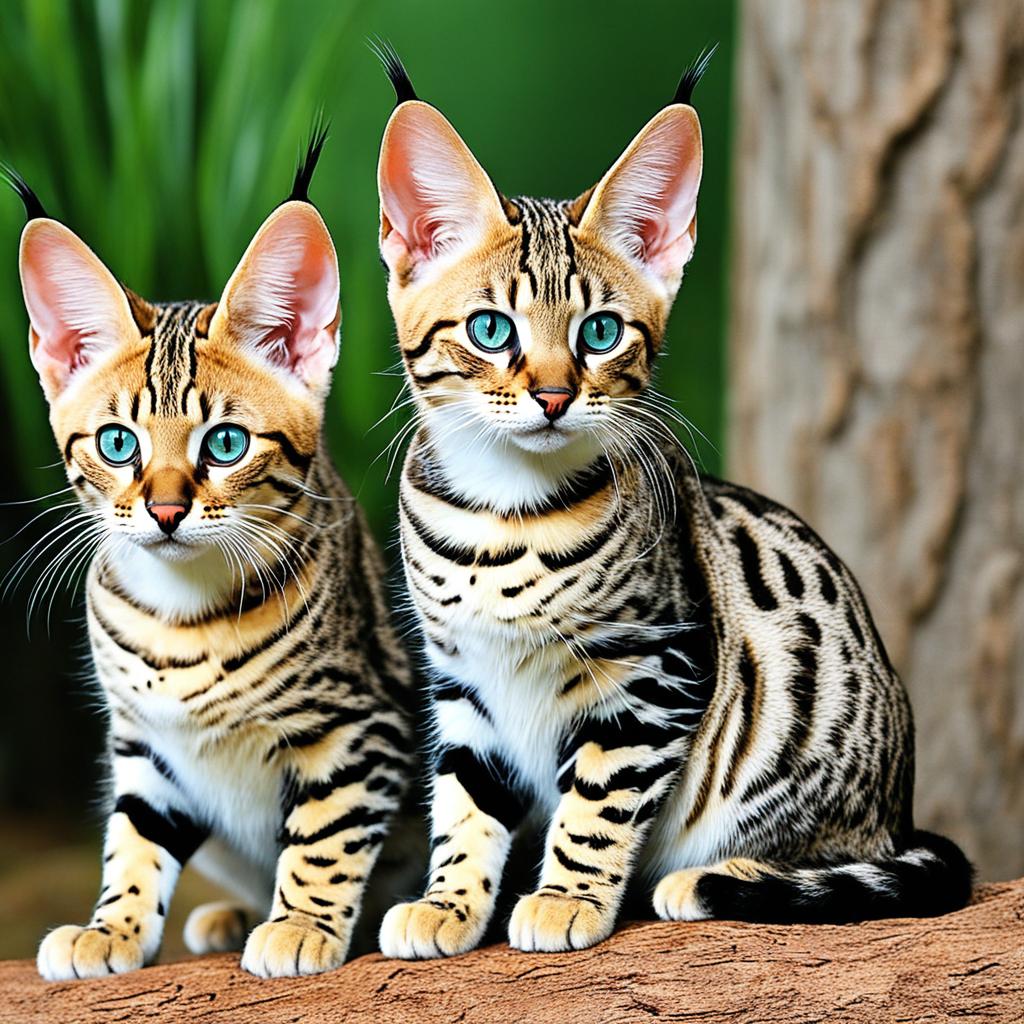
Few cats can boast an origin as majestic and fascinating as the Savannah Cat. These unique felines are a cross between the domestic cat and the African Serval, embodying both the elegance of the wild and the charm of a pet. The history of Savannah Cats traces back to 1986 when cat breeder Judee Frank successfully achieved the first documented hybrid between a Serval and a Siamese cat.
History and Origin
If you delve into the history of Savannah Cats, you’ll find a lineage intertwined with the majestic African Serval. The first known Savannah Cat was born on April 7, 1986, captivating breeders and cat enthusiasts alike. These felines brought a piece of the African savannah into the living rooms of curious owners, offering not just a pet but a piece of history.
Physical Characteristics
The physical traits of Savannah Cats are nothing short of remarkable. Picture this: a feline with large, expressive eyes, striking, spotted fur reminiscent of its wild ancestors, and impressively large ears that give it an almost bat-like appearance. These characteristics of Savannah Cats aren’t just for show—they reflect their active, playful nature and dog-like loyalty.
In terms of size, Savannah Cats are the tallest domestic cats, with long legs and a sleek, athletic build that hints at their wild roots. Recognizing these physical traits of Savannah Cats can help you understand their unique needs, especially when it comes to breeding and care.
“The Savannah Cat’s distinguished look is matched only by its lively and affectionate personality.” – An avid cat enthusiast.
Understanding Savannah Cat breeding is crucial if you’re considering adding one to your family. They are often noted for their hybrid vigor, resulting in robust health and longevity that can be quite appealing. Breeders focus on maintaining the balance between their wild instincts and the temperament suited for domestic life. Knowledge of Savannah Cat breeding is, therefore, fundamental to appreciating and caretaking these extraordinary felines.
Understanding the Heat Cycle in Savannah Cats
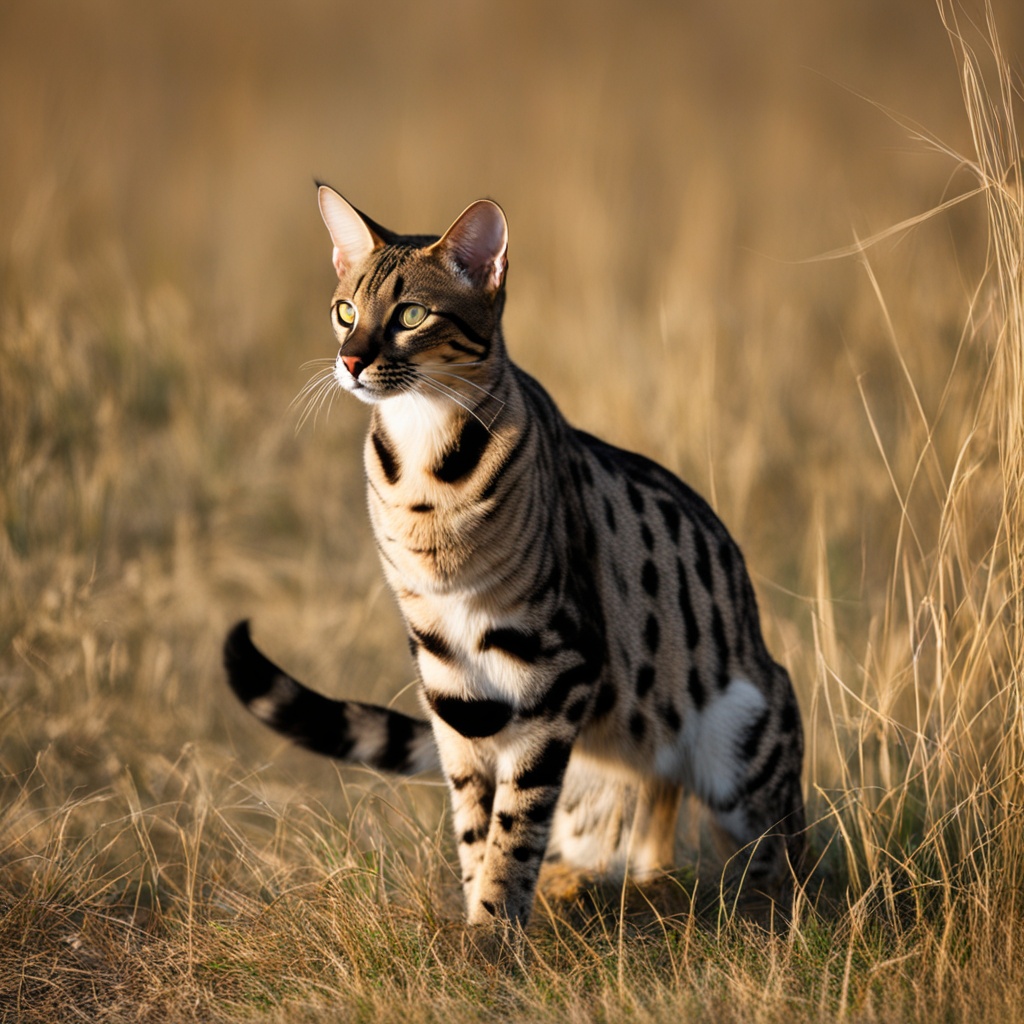
When it comes to the reproductive life of a Savannah Cat, the heat cycle, or estrus, plays a pivotal role. As this exotic feline signals its readiness for mating, you’ll observe distinct Savannah Cat heat symptoms that are impossible to miss. Let’s delve deeper into this fascinating phase.
What is a Heat Cycle?
In simple terms, a heat cycle refers to the period during which a Savannah Cat is fertile and ready to mate. Understanding Savannah Cat’s heat involves recognizing various behavioral signs that indicate estrus. From a heightened state of affectionate behavior to vocalization, these cues are nature’s way of announcing your feline’s reproductive availability.
A key aspect of caring for your cat lies in identifying these Savannah Cat heat symptoms promptly. This awareness enables you to provide the support necessary during this crucial time.
Frequency of Heat Cycles
The frequency of Savannah Cat heat cycles can vary significantly based on environmental factors. Unlike some other breeds, Savannah Cats may experience multiple cycles throughout the year. Indoor environments, in particular, can lead to year-round heat cycles due to controlled climates and consistent light exposure.
Here’s a succinct look at the frequency and related aspects of heat cycles in Savannah Cats:
| Aspect | Description |
|---|---|
| Cycle Duration | Typically lasts 7-10 days |
| Frequency | Multiple cycles annually |
| Influencing Factors | Environmental conditions (indoor vs. outdoor) |
| Behavioral Changes | Increased affection, vocalization, restlessness |
Understanding the dynamics of Savannah Cat estrus is crucial for any enthusiastic owner. Being informed about the frequency of Savannah Cat heat cycles and recognizing associated symptoms will enable you to provide better care and maintain your pet’s well-being during these recurring periods.
Signs of a Savannah Cat in Heat

When your Savannah Cat enters heat, it can be quite the spectacle. Understanding these signs is crucial to adapting to and addressing their needs effectively. Let’s delve into both behavioral and physical symptoms to keep an eye on.
Behavioral Symptoms
Your normally placid cat might turn into an affectionate cuddle-monster. Common behavioral changes in heat include:
- Increased vocalization, often incessant meowing.
- Persistent attention-seeking behavior.
- Enhanced affection and rubbing against objects—your furniture won’t know what hit it!
These behavioral changes in heat are your Savannah Cat’s way of signaling their readiness for breeding. Keeping tabs on these can help you anticipate their needs and provide appropriate care.
Physical Symptoms
Besides behavioral cues, you might notice some physical signs of heat in Savannah Cats. These often subtle, yet distinctive signs, include:
- Crouching with raised hindquarters.
- Increased grooming, particularly around the genital area.
Recognizing these physical signs of heat in Savannah Cats is essential for understanding their breeding behaviors and timely action. By monitoring these symptoms, you can better handle the signs of a Savannah Cat in heat.
What to Expect During a Savannah Cat’s Heat Cycle?
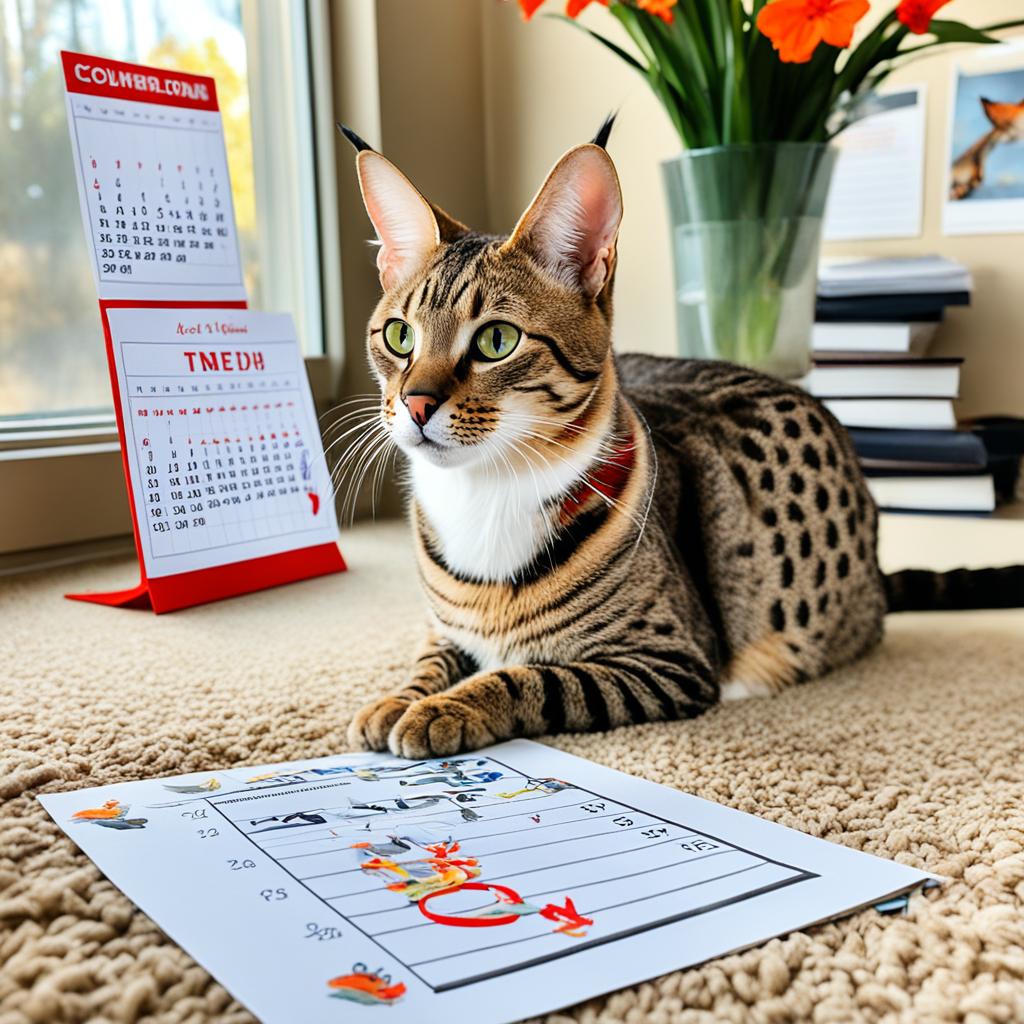
Understanding What to Expect During a Savannah Cat’s Heat Cycle is crucial for any owner. During this period, your Savannah may showcase an array of unique behaviors. From restlessness to vocalizations, these actions are their way of expressing their natural mating desires. Mating behavior in Savannah Cats is quite distinct, and recognizing these signals can help you manage their needs more effectively.
The Savannah Cat heat cycle stages come with noticeable changes. You’ll observe increased affection, persistent attention-seeking, and possibly even some bold escapades. Patience and understanding are essential to navigate this period. By staying aware of the different stages, you can anticipate and respond to their needs proactively.
Here’s a breakdown of the stages:
| Savannah Cat Heat Cycle Stages | Behavioral Signs |
|---|---|
| Proestrus | Mild Affection, Restlessness |
| Estrus | Vocalizations, Increased Affection |
| Postestrus | Decreased Affection |
| Diestrus | Normal Behavior Resumes |
Embrace the quirks of your Savannah’s heat cycle and, with knowledge, make this phase smoother for you both!
Dealing with a Savannah Cat in Heat

Handling a Savannah Cat in heat can be quite the task. You’ll need to navigate a range of behavioral changes and ensure that your feline friend remains comfortable and safe. The heightened behavior can be intense, but with the right approach, you can make this period manageable for both you and your cat.
Handling Behavior Changes
When dealing with Savannah Cat heat behavior, it’s common to notice increased vocalization, restlessness, and a strong desire for attention. Your cat might also become more affectionate or demanding. It’s essential to respond with patience and provide a calm environment to help mitigate stress. Regular playtime and interactive toys can also help in channeling their energy constructively.
Ensuring Comfort and Safety
Providing the right comfort for Savannah Cat in heat involves creating a soothing space. Ensure there are cozy resting spots and consider using calming pheromone diffusers to ease their anxiety. Safety for Savannah Cats during heat means securing windows and doors properly, as they might attempt to escape due to their strong instincts. Additionally, maintain a consistent routine to help them feel secure and grounded during this challenging period.
“A calm and attentive approach from you can significantly alleviate the stress your Savannah Cat experiences during heat.”
| Handling Behavior Changes | Ensuring Comfort and Safety |
|---|---|
| Increased vocalization, restlessness | Create a soothing space |
| More affection or demanding behavior | Use calming pheromone diffusers |
| Patience and calm environment | Secure windows and doors |
| Interactive toys and regular playtime | Maintain a consistent routine |
Duration of a Savannah Cat’s Heat Cycle
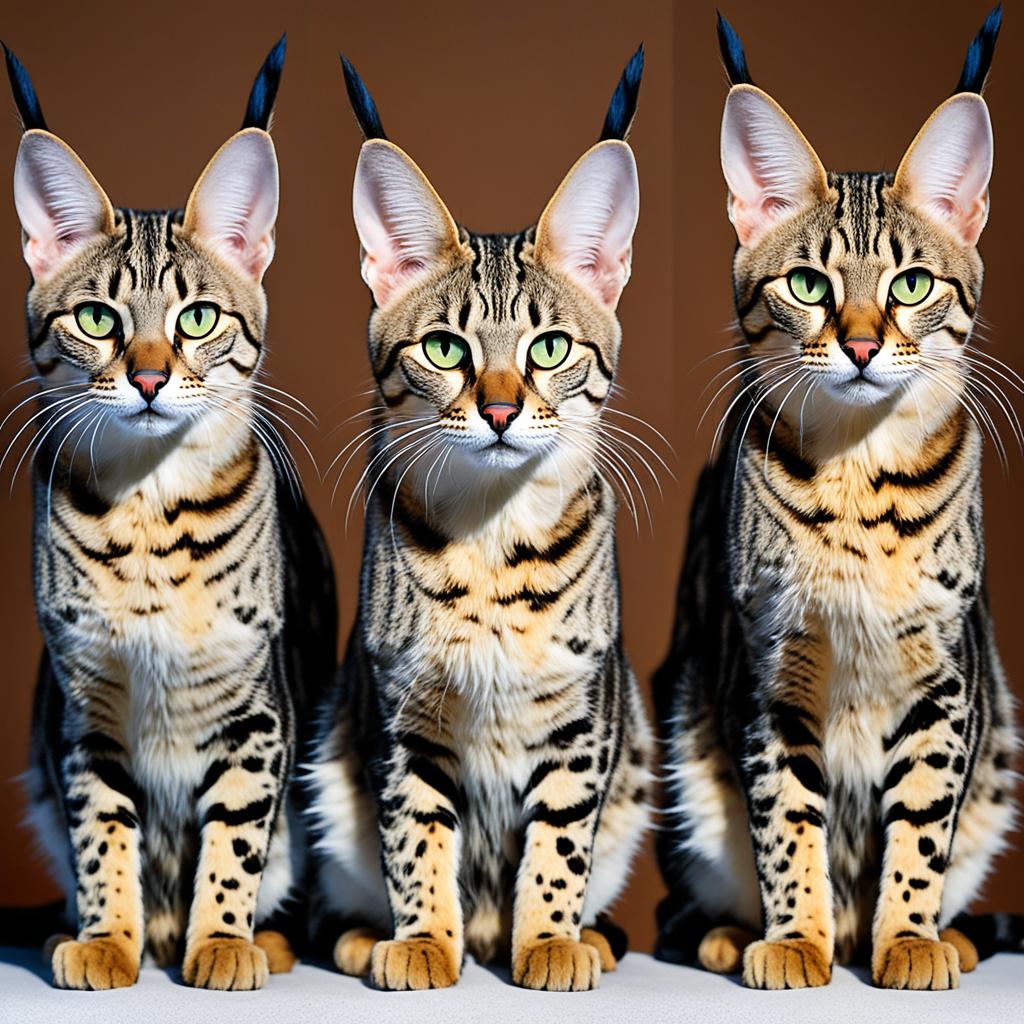
Understanding the duration of heat in Savannah Cats is crucial for any owner. Typically, a Savannah Cat’s estrus period can last several days. If left unmated, you might see her re-enter heat in just one to three weeks. So, how long does a Savannah Cat heat last exactly? While it varies, you’ll need to be prepared for a repeat performance sooner than you think.
Knowing the precise duration of heat in Savannah Cats helps in managing and preparing for this phase more effectively. The timeframe and behavioral nuances during the Savannah Cat estrus period will guide you in providing your feline friend with the care she needs.
| Heat Cycle Phases | Duration | Frequency |
|---|---|---|
| Proestrus | 1-3 days | Every 1-3 weeks if unmated |
| Estrus | 5-7 days | Repeats if unmated |
| Interestrus | 1-3 weeks | Between cycles |
| Anestrus | Seasonal | Varies |
Environmental Factors Affecting the Heat Cycle
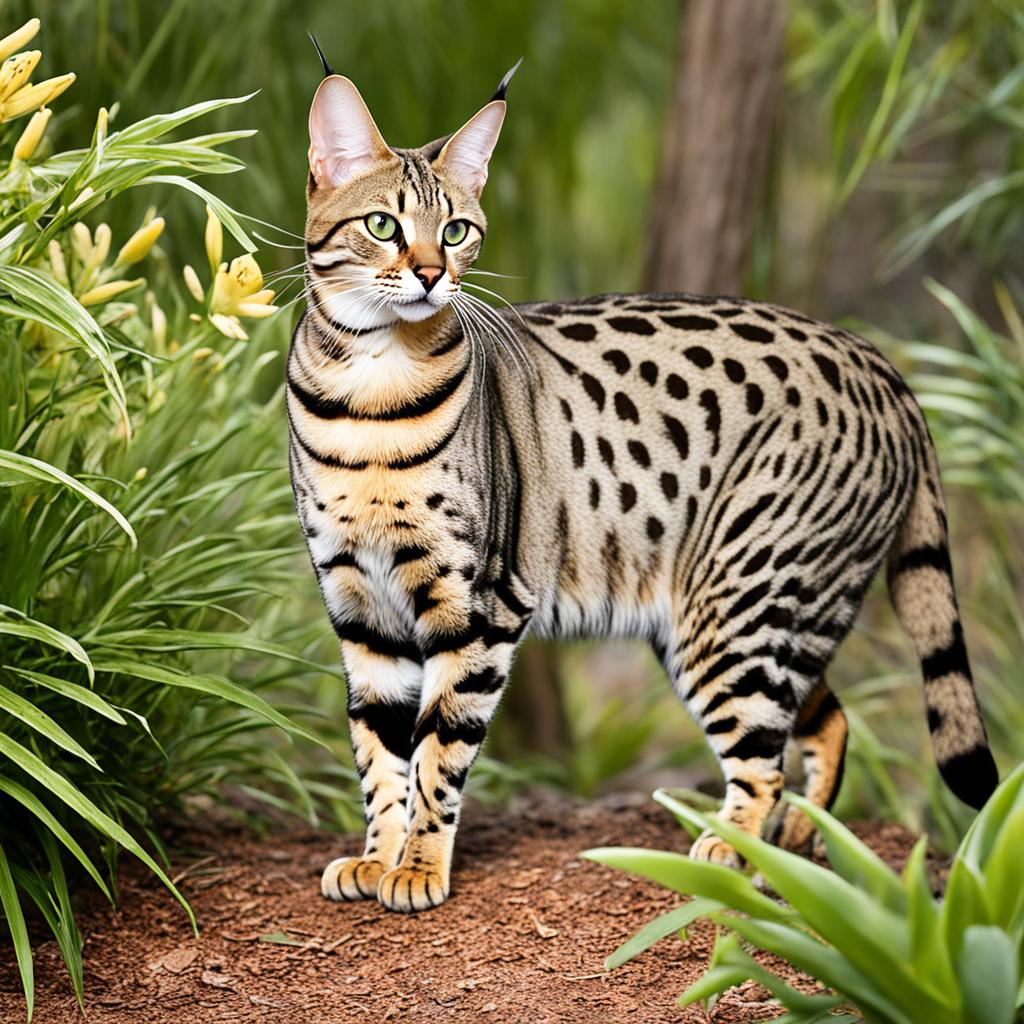
The Savannah Cat’s estrus cycle is profoundly influenced by environmental factors. Understanding these nuances helps in providing the best care for your exotic feline friend.
Daylight and Temperature
The influence of daylight on heat cycles plays a pivotal role in regulating the estrus phase of Savannah Cats. These cats are naturally responsive to longer daylight hours, which can stimulate the onset of heat. Furthermore, the temperature effects on Savannah Cat estrus reveal that higher ambient temperatures often lead to more frequent and prolonged heat cycles. Hence, living in a climate-controlled environment can alter the regularity of these cycles.
Indoor vs. Outdoor Cats
When it comes to indoor vs. outdoor Savannah Cat heat cycles, there are noticeable differences. Indoor cats tend to have more consistent heat cycles year-round due to stable indoor conditions. On the other hand, outdoor cats experience more variability in their heat cycles, influenced by seasonal changes in the environment and weather. This understanding is critical, as the environmental impact on Savannah Cat heat can significantly affect their behavior and health needs.
As an owner, recognizing these factors can help you better anticipate, manage, and care for your Savannah Cat during their heat cycles, whether they roam free outdoors or enjoy the comforts of indoor living.
Nutritional Needs During the Heat Cycle
As your Savannah Cat navigates through the heat cycle, its nutritional needs may require some thoughtful adjustments. This period can be demanding, and ensuring an optimal Savannah Cat heat diet is pivotal for maintaining their overall health and well-being. A well-balanced diet rich in essential vitamins and minerals can help support your feline friend during this time.
Dietary Adjustments
During the heat cycle, you might notice fluctuations in your cat’s appetite. It’s essential to monitor their food intake and make necessary nutritional adjustments for heat. Incorporate high-quality protein sources to provide sustained energy levels. You might also consider adding a variety of wet and dry food options to encourage consistent eating habits. Keep an eye on their weight and adjust portion sizes accordingly to maintain a healthy balance.
Supplements and Hydration
Supplemental nutrients can play a significant role in supporting your Savannah Cat during this time. Omega-3 fatty acids, for instance, can aid in reducing inflammation and promoting a shiny coat. Adding specific supplements designed to cater to feline nutritional gaps can further bolster their health. Don’t overlook the importance of hydration for Savannah Cats during heat. Ensure your cat has access to fresh water at all times, and consider incorporating wet food to increase their overall fluid intake.




